Welcome

Curriculum Vitae
News and Announcements
- 2024 and beyond: I will not likely be updating this webpage in the future, as I settle into a retirement regimen that includes new directions for me. So much is still happening with this great group, but I will no longer be documenting it. I will be publishing a few last papers, and I was deeply honored to be selected as a new Fellow of the American Association for Aerosol Research at the AAAR meeting in Albuquerque in October 2024.
- Momentous endings to 2023: The year ended with Paul announcing his retirement, formally started in September but with a subsequent transition to part-time for the next year before full retirement in July 2024. Ryan Patnaude, Kevin Barry and Kathryn Moore all completed their PhD programs from late September through early November! Ryan and Kevin will be continuing with us to assist present research needs, especially the busy field research season in 2024 that includes two Arctic aircraft deployments (NSF CAESAR and NASA ARXSIX). Kathryn is weighing her postdoctoral options while completing publications. The CAICE center entered a no-cost extension year after an all-day special session and celebration at the ACS meeting in San Francisco in August.
- The BACS-2 field campaign launched at the NSF National Ecological Observatory Network’s Central Plains Experimental Range (CPER) site northeast of Fort Collins during May and June 2023, with the same partners as BACS-1. The weather has provided us with an exciting contrast to BACS-1, with an extremely wet period of strong convective activity. BROADN has piggybacked on this field study once again, with our largest compliment of measurements yet, and new additions from Prof. Mark Hernandez during his sabbatical year with us.
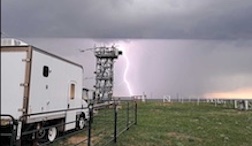
- Jessie and Camille departed May 5 for the ARTofMELT voyage on the Oden icebreaker. They will be "out of contact" through June17. Good luck Jessie and Camille!
- Paul presented “Quantifying Ice Nucleating Particle Types and their Importance in Different Atmospheric Environments,” for the Environmental and Climate Sciences Department Seminar Series, Brookhaven National Laboratory on April 6, 2023.
- Paul attended and presented at the “Batsheva de Rothschild Seminar" on Cloud-Climate Interactions Across Scales, Interuniversity Institute for Marine Sciences, Eilat, Israel, from February 27- March 2, 2023. This symposium honored Dr. Danny Rosenfeld and Dr. Alex Khain on their retirements.
- Summer Internships usually available. Summer interns enliven our laboratory! Ruby Nelson, Samantha Gillette and Marquin Spann, pictured here, joined us back in 2018. Internships with our group can be arranged under our guidance via the department’s summer REU site in Earth system science. Positions are also available via BROADN's summer REU program.
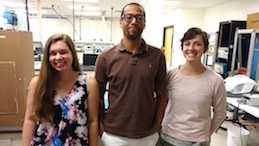
- New proposal efforts funded!. Five new research efforts were recently funded or are in process for the team. Jessie will lead the ARTofMELT voyage of the Swedish icebreaker Oden to study Arctic warm air intrusions in Spring 2023. Jessie will also be co-PI on a collaborative proposal with Jay Mace (U. Utah) for aerosol and INP studies in new Southern Ocean ship voyages between Fall 2023 and 2025. Paul and Russell will lead the new NSF CAESAR and NASA ARCSIX campaigns, respectively occurring in Winter and Summer of 2024. Paul also received an DOE Environmental Molecular Sciences Laboratory (EMSL) Large Scale Research grant for analysis of particle samples collected from the DOE Surface Atmosphere Integrated Laboratory (SAIL) campaign. EMSL collaborating scientist is Swarup China. Paul was co-PI on a similar DOE FICUS grant for analyses at EMSL from other SAIL samples, led by Allison Aiken of Los Alamos National Laboratory. See the Research Page for more information.
- Jessie, Paul, Kevin, and Camille attended and presented at the 2nd MOSAiC Science Conference in Boulder from February 13-17.
- Jessie, Paul, Sonia, Ryan, Kevin, Emily L and Camille all attended the 103rd AMS Annual Meeting in Denver in January 2023 to present their recent results.
- Jessie, Tom and Kevin all attended the AGU Fall Meeting in Chicago in December 2022 to present their recent results. Paul attended and presented virtually. Jessie and Paul co-lead different sessions.
- Camille Mavis joined us in August 2022 as a new member of our group at the M.S. level. Camille will explore water- and snow-side ice nucleating particle populations and their relation to air concentrations during the MOSAiC campaign.
- CHAOS-2022: Kathryn, Tom and Paul coordinated our group participation in these experiments, the first for the new CAICE wind-wave flume, known as the SCRIPPS OCEAN ATMOSPHERE RESEARCH SIMULATOR (SOARS). This massive facility (too large to photo) can control wave amplitude, winds and temperature of sea water for studying ocean emissions of gases and aerosols. Samantha Greeney (Texas A&M) joined us as a summer undergraduate intern on the study.
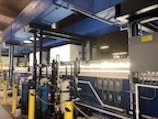
- Ben Swanson departed us in July to join our industry collaborators, Handix Scientific, in a new permanent position right here in Fort Collins. Good luck, Ben!
- ESCAPE campaign happens in sweltering Houston. Ryan, Paul and Russell participated in various aspects of installations and flight scientist duties during the NSF-funded Experiment of Sea Breeze Convection, Aerosols, Precipitation, and Environment (ESCAPE) campaign, flown on the Canadian National Research Council Convair-580 aircraft in Houston, TX in May to June 2022 , overlapping with the DOE TRACER campaign. Ryan will use these data and data from the SPEC Learjet towards completion of his PhD studies. Photo of the ESCAPE "A(aerosol)-team" (alumnus Christina McCluskey, Ryan, Greg Roberts and Paul).
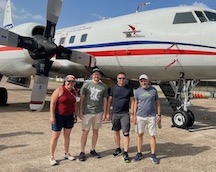
- The BACS field campaign launches at CPER. BACS-1 occurred at the NSF National Ecological Observatory Network’s Central Plains Experimental Range (CPER) site northeast of Fort Collins during May and June 2022. This was an action-packed field study to study the role of storms in influencing bioaerosol emissions that represented a collaboration led by Russell, Leah Grant (Van den Heever group), Betsy Stone’s group from the University of Iowa. BROADN piggybacked for its first field study as well.
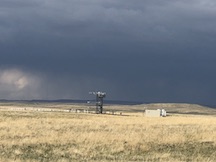
- Claudia Mignani also joined us in April 2022 to work in BROADN under her Swiss National Science Foundation postdoctoral fellowship, “Is rain a driver for emissions of bioaerosol particles, which can modify clouds?” Claudia will focus on factors affecting the emission of biological ice nucleating particles in joint BROADN and BACS field efforts.
- Noelle Bryan joined us in April 2022 as a new BROADN postdoctoral scientist. Noelle will work on genomic analyses of the aerobiome and its relation to the terrestrial biome and other factors.
- Russell was awarded the Walter Scott Jr. College of Engineering Rising Star Researcher award in a ceremony in Spring 2022. Congratulations Russell!
- Ryan, Kathryn, Russell and Tom conducted an extended series of laboratory studies on the cirrus nucleation properties of nascent, aged and secondary marine aerosols produced with a CAICE marine aerosol reference tank during January and February 2022. This is Tom’s artful photo of the action!
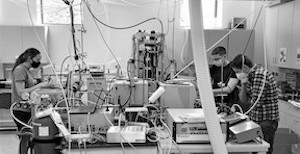
- Jessie, Emily Lill (pictured with rooftop installation), Russell, and Paul shared time in Fairbanks for the Alaskan Layered Pollution And Chemical Analysis (ALPACA) field study during January and February 2022, collecting large data sets on aerosols and INP concentrations and compositions, along with a large team of collaborators from across the U.S. and internationally.
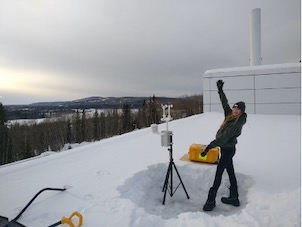
- Paul was inducted as a Fellow of the American Geophysical Union during the 2021 AGU Meeting in New Orleans.
- Sonia and Paul were excited to find out that the new Bii Regional One-Health Aerobiome Discovery Network (BROADN) would be supported as a five-year effort from NSF Biological Sciences to the CSU One Health Institute, starting Septebmer 1, 2021. Sonia began in the positions of Deputy Director, Co-PI and Co-theme lead. Paul is also a Co-theme leader.
- Jessie, Tom, Kevin, and Marina deployed to Utqiagvik, Alaska for the field phase of the NSF-supported Arctic Permafrost Ice Nucleation (ARCSPIN) program from August into September, 2021. Collections included terrestrial biomass, soil, and permafrost, water from thermokarst lakes, lagoons and the open ocean, and air samples from a variety of sites including upwind and downwind of the lakes. Analyses are continuing to connect INPs and DNA in land and water to INPs in air.
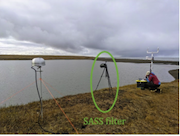
- In August 2021, we welcomed Brian Heffernan as new members of our group at the M.S. level. Brian is participating in collections and analyses of aerosol data during the BACS field campaigns in 2022-2023. Emily Lill also joined us under co-advisement by Emily Fischer and Jessie. Emily will conduct her M.S. studies around the ALPACA study prior to continuing her PhD studies with Professor Fischer.
- Marina Nieto-Caballero joined us in June 2021 as a new postdoctoral scientist following completion of her PhD in Environmental Sciences on aspects of the indoor aerobiome in the group of Mark Hernandez at the University of Colorado. Marina is applying her bioaerosol experience toward objectives in both the ARCSPIN and Bioaerosol and Convective Storms (BACS) projects and is also contributing to BROADN efforts (see above).
- Ryan, Kathryn and Russell shared efforts for installations and flight scientist duties during the NSF-funded Secondary Production of Ice in Cumulus Experiment ((SPICULE) campaign, flown on the NSF/NCAR G-V aircraft based from Broomfield, CO in May to June 2021. We will use our INP measurements from the CFDC (pictured) and ice spectrometer filters, along with aerosol and cloud property measurements from the SPEC Learjet across the west-central Plains towards constraining the role of primary and secondary ice formation processes in summer cumuli.

- Ben Swanson joined our group as a postdoctoral scientist in January 2021 following completion of his PhD under the guidance of Alex Huffman at the University of Denver and a 1-year stint as a postdoctoral scientist with Amanda Frossard at the University of Georgia. Ben will work on our DOE ASR studies for Understanding the natural sources of aerosols and their impacts on cloud formation and climate across hemispheres.
- Jun Uetake departed our group after a successful 33 months as a postdoctoral scientist and research scientist to assume a position as an Associate Professor of Forestry and Forest Ecology at Hokkaido University in January 2021. We are excited for this next chapter in Jun’s career.
- In August 2020, we welcomed Ryan Patnaude as a new member of our group at the PhD level. Ryan came to us following his M.S. studies at San Jose State University in the group of Minghui Diao. Ryan will explore the topics of primary versus secondary ice formation in clouds, via participation in our summer 2021 and 2022 aircraft research studies in the SPICULE and ESCAPE programs.
- Paul was awarded Walter Scott Jr. College of Engineering Researcher of the Year in a ceremony held in March 2021.
- Jessie and Tom were named as aerosol mentors for ice nucleating particle measurements within the DOE Atmospheric Radiation Measurement program, starting in Spring of 2021.Consequently, a new laboratory space was set up to include two new ice spectrometers, and Carson Hume was hired as a Research Associate to serve as technician. This is an exciting new addition to the ARM measurement suite, initially encompassing filter collections for annual INP cycle measurements at the DOE SGP and Oliktok sites, and now involving major new campaign measurements with DOE SAIL and TRACER campaigns, including Tethered Balloon Sonde (TBS) flights.
- In the throes of the start of the pandemic, Baptiste Testa completed a 6-month internship from April to September 2020, performing analyses of INP and aerosol data from the CACTI campaign. Baptiste began his studies toward his PhD immediately afterwards at ETH-Zurich under the guidance of Zamin Kanji. After departing, Baptiste completed a lead author publication in JGR-Atmospheres based on his internship analyses from the DOE CACTI campaign in Argentina.
- Sea2Cloud (2020): Under support from an NSF supplement to our SOCRATES studies award, Kathryn Moore sailed on the Sea2Cloud voyage on the RV Tangaroa from Wellington, NZ in March 2020. The voyage to map emissions from biologically productive ocean regions south and east of New Zealand was abbreviated due to the COVID-19 outbreak. Nevertheless, she hopes to integrate real-time and offline INP measurements into her PhD research studies and publish other research results with our French and New Zealand collaborators (BAMS paper in review).

- Paul was humbled to be elected American Meteorological Society Fellow in a ceremony held at the 100th AMS meeting in Boston in January 2020.
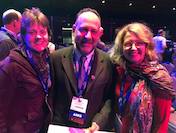 He presented two retrospective presentations at AMS. Shortly before, in December 2019, Sonia received recognition as an AGU Fellow in a ceremony at the Fall Meeting in San Francisco. A good time was definitely had by all at an awards reception dinner and dance for the ages (ask anyone who attended that one)!
He presented two retrospective presentations at AMS. Shortly before, in December 2019, Sonia received recognition as an AGU Fellow in a ceremony at the Fall Meeting in San Francisco. A good time was definitely had by all at an awards reception dinner and dance for the ages (ask anyone who attended that one)!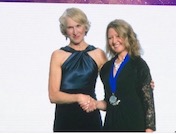
- Former and current team members are helping to drive the success of industry and governmental partners. In bittersweet news, we said farewell, but not goodbye, to Ezra Levin at the end of December 2019. Ezra joined Handix Scientific (http://www.handixscientific.com/) in a Scientist position, and helped them open their new Fort Collins space. Ezra assumed a new position with the Colorado Department of Public Health and the Environment in January 2023.
- Tom coordinated with DOE technicians to collect an additional high-value Arctic region INP data set from Andenes on the coast of Norway from November 2019 to May 2020 for the DOE ARM Cold-air Outbreaks in the Marine Boundary Layer Experiment (COMBLE) campaign that overlapped with portions of MOSAiC.
- Jessie participated directly in the historic MOSAiC mission to lock an icebreaker in the high Arctic ice over a year for atmospheric and biospheric research. Jessie spent time on the Polarstern during the first phase from September through December 2019. Research will continue for years following this campaign, under DOE Atmospheric System Research funding. See CSU story here, and DOE ARM story here.

- Recent publications: "Annual cycle observations of aerosols capable of ice formation in central Arctic clouds" a feature paper on the INP annual cycle measured during the MOSAiC campaign led by Jessie Creamean, was published in the Nature Communications. Kathryn Moore led the publication, " Estimation of sea spray aerosol surface area over the Southern Ocean using scattering measurements " in the Journal of Geophysical Research – Atmospheres, an important outcome of our Southern Ocean studies in 2018 that documents various ways that aerosol surface area needed for INP active site density calculations (and other applications) may be retrieved by different methods. In the realm of collaborative efforts, Emma Järvinen’s (Karlsruhe Institute of Technology) lead publication centered on the central hypotheses of the SOCRATES study, and including our INP data, was also published in the Journal of Geophysical Research – Atmospheres, as " Ice Crystal Properties and Evidence for Secondary Ice Production in Southern Ocean Stratiform Clouds ".
Contact info
Department of Atmospheric Science
1371 Campus Delivery
Colorado State University
Fort Collins, Colorado 80523
email*: Paul.Demott-AT-colostate.edu
office: (970) 491-8257
*Mailto email links are not used on this web site. Thus, "@" symbols have been replaced by "-AT-" in postings here.